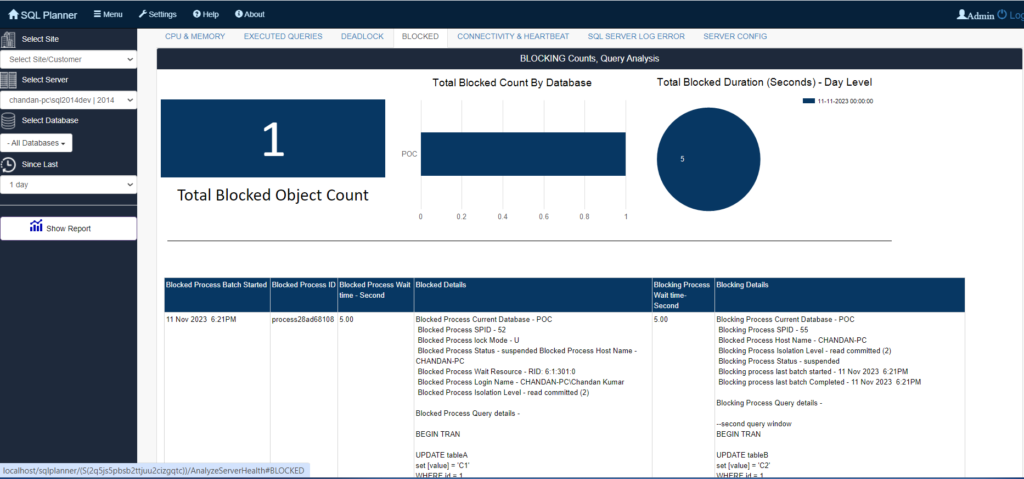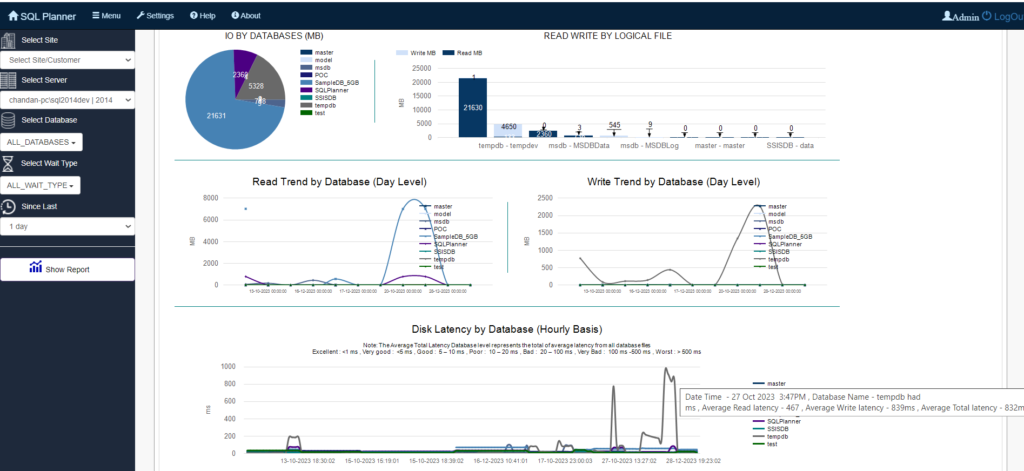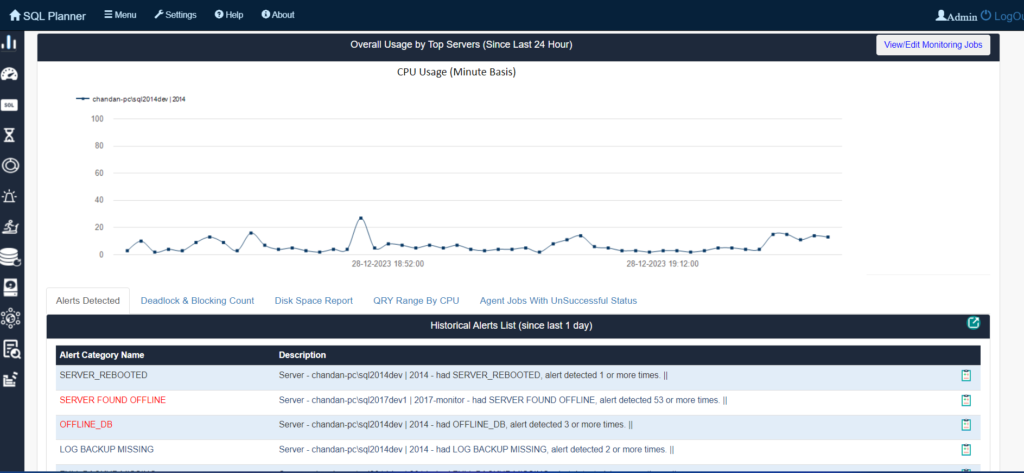The analogy of comparing a SQL Server health check to a car checkup is spot-on! Just like preventive maintenance for your car, proactively assessing your SQL Server’s health is crucial for optimal performance and avoiding costly breakdowns. This guide aims to demystify the process, making it a breeze for SQL Server users of all levels, regardless of their location.
Why Conduct a SQL Server Health Check?
Think of it as a comprehensive physical exam for your database server. Just as regular checkups are essential for maintaining your health, proactive health checks are crucial for keeping your SQL Server in top shape. They reveal its overall health and identify any potential issues that could hinder performance or lead to costly downtime.
Here’s the analogy:
- Preventive Maintenance: Imagine a well-maintained car that receives regular oil changes, tune-ups, and tire rotations. It’s much less likely to break down unexpectedly on the road compared to a neglected vehicle. Similarly, regular health checks keep your SQL Server running smoothly and prevent unexpected issues that could disrupt business operations.
Benefits of Proactive Monitoring for Peak Performance:
- Early Detection: Catch potential problems early before they become major headaches. Identify bottlenecks, configuration errors, or security vulnerabilities before they impact performance or data integrity.
- Optimization: Uncover areas for improvement and make informed adjustments to enhance query performance, resource utilization, and overall system responsiveness.
- Cost Savings: Prevent costly downtime and reduce expenses associated with emergency repairs or data loss.
- Peace of Mind: Gain confidence knowing your SQL Server is operating at its best, allowing you to focus on other priorities without constant worry about potential issues.
- Data-Driven Decisions: Make informed choices about resource allocation, maintenance plans, and future upgrades based on actual data and insights from health check reports.
In essence, proactive health checks are an investment in the long-term health and performance of your SQL Server. They help you:
- Maintain peak performance and responsiveness
- Extend the lifespan of your server
- Minimize downtime and disruptions
- Protect valuable data assets
- Reduce overall IT costs
- Enhance user satisfaction
- Make informed decisions based on data
Key Benefits of Conducting a SQL Server Health Check
Just as regular checkups are essential for maintaining your health, proactive health checks are crucial for keeping your SQL Server in top shape. Think of it as a comprehensive physical exam for your database server, revealing its overall health and identifying any potential issues that could hinder performance or lead to costly downtime.
Here’s a closer look at the key benefits of conducting a SQL Server Health Check Report:
1. Enhanced Performance:
- Bottleneck identification: Imagine your server as a highway. Health checks identify slow-moving sections (queries) due to narrow lanes (insufficient resources like CPU or memory). You can then “widen the lanes” by allocating more resources, optimizing queries, or using different execution plans.
- Resource Optimization: Think of resources as the fuel for your server. Health checks reveal areas where fuel is wasted (idle resources) or overused (bottlenecks). You can then “refuel efficiently” by adjusting resource allocation, scheduling tasks strategically, or consolidating workloads.
- Faster queries & happier users: Smoother traffic flow (optimized queries) means faster travel times (quicker responses) for users, leading to increased satisfaction and productivity.
2. Proactive Issue Detection:
- Early warning system: Imagine a smoke detector for your server. Health checks detect potential issues like overheating CPUs, low disk space, or security vulnerabilities before they turn into “fires” (outages or data loss). This allows for early intervention and prevents major damage.
- Snowball effect prevention: Small issues, like a slow leak in a tire, can snowball into major problems if left unchecked. Health checks identify these leaks early, allowing you to patch them up before they cause a complete blowout (catastrophic server failure).
- Predictive maintenance: By regularly monitoring key metrics, you can anticipate future issues and plan for maintenance activities before they become urgent, minimizing downtime and ensuring smooth operation.
3. Improved System Stability:
- Smooth operation: Imagine a well-oiled machine. Health checks help ensure your server runs smoothly by identifying and addressing issues that could cause hiccups or crashes. This leads to consistent performance and reliable data access.
- Minimized downtime: Downtime is like a traffic jam, halting productivity and costing money. Health checks help avoid these jams by keeping your server up and running, maximizing uptime and minimizing disruptions.
- Boosted productivity & reliability: When your server is stable and reliable, users can focus on their tasks without worrying about outages or data loss. This leads to increased productivity and a more trustworthy system.
4. Peace of Mind:
- Confidence & focus: Knowing your server is in good hands (thanks to regular health checks) allows you to focus on other critical tasks with confidence. You don’t have to constantly worry about potential server issues or impending disasters.
- Informed decision-making: Health check reports provide valuable data and insights that can inform your decisions about server maintenance, upgrades, resource allocation, and future planning. You can make data-driven choices instead of relying on guesswork or intuition.
Benefits of a SQL Server Health Check Report:
- Enhanced performance: Identify bottlenecks and optimize resource allocation, leading to faster queries and happier users.
- Proactive issue detection: Catch potential problems early before they snowball into major outages or data loss.
- Improved system stability: Ensure smooth operation and minimize downtime, boosting productivity and reliability.
- Peace of mind: Gain confidence knowing your SQL Server is functioning at its best, allowing you to focus on other priorities.
Getting Started: Preparing for the SQL Server Health Check
Before diving into the actual health check process, it’s crucial to gather information and prep your tools. This ensures a smoother and more effective assessment.
Checklist for Necessary Information:
- Server details: Name, version, edition, operating system.
- Hardware specifications: CPU, memory, disk space, network configuration.
- Software details: Installed applications, services, and dependencies.
- User and database statistics: Number of users, database size, activity patterns.
- Backup and recovery plans: Frequency, types, location, testing history.
- Recent performance trends: Any observed slowdowns, errors, or unusual behavior.
- Security configurations: Authentication, access controls, auditing settings.
Tools and Resources for the Health Check:
- SQL Server Management Studio (SSMS): Built-in tools for monitoring performance, querying data, and analyzing server health.
- Third-party monitoring tools: Offer advanced features like real-time alerts, historical data analysis, and customized dashboards.
- Reporting scripts: Pre-written scripts for specific health checks, readily available online or within SSMS.
- SQL Server documentation: Official Microsoft documentation covering server configuration, performance optimization, and best practices.
- Online resources: Forums, blogs, and communities dedicated to SQL Server troubleshooting and maintenance.

Additional Tips:
- Schedule the health check at a low-traffic time: Minimize performance impact by avoiding peak usage hours.
- Set aside dedicated time: Allocate sufficient time for gathering information, running scripts, and analyzing results.
- Document your findings: Keep a detailed record of observed issues, identified bottlenecks, and planned corrective actions.
- Seek help if needed: Don’t hesitate to consult experienced SQL Server professionals if you encounter complex issues or require assistance with interpretation or remediation.
Remember, thorough preparation is key to a successful and productive SQL Server health check. Gather the necessary information, equip yourself with the right tools, and set the stage for a comprehensive assessment of your server’s health and performance.
Step-by-Step Guide: Conducting the SQL Server Health Check
Delving into your SQL Server’s health is like dissecting a fine watch – methodical, meticulous, and crucial for its smooth operation. The health check process unfolds in three, interwoven stages: the initial assessment, the detailed analysis, and the documentation and recommendations.
SQL Server Health Check – Key Points:
Initial Assessment:
- Gather insights from Tools (server properties, configs, error logs).
- Monitor key metrics like CPU, memory, disk space.
- Scrutinize recent activity for performance bottlenecks.
- Flag inconsistencies and warnings for further investigation.
Detailed Analysis:
- Use specialized tools to analyze server behavior trends.
- Pinpoint resource hogs causing performance slowdowns.
- Rigorously assess server security (logins, permissions, encryption).
- Test and validate backups and recovery procedures.
- Verify data integrity for any errors or inconsistencies.
Documentation and Recommendations:
- Record findings in a comprehensive report.
- Prioritize corrective measures based on severity and impact.
- Provide clear recommendations for addressing identified issues.
Challenges and Navigation:
- Break down complex environments into manageable tasks.
- Leverage online resources and communities for expertise.
- Schedule health checks during low-traffic hours for minimal disruption.
- Implement best practices and maintain constant vigilance for security.
Benefits of Regular Health Checks:
- Improved server performance and stability.
- Enhanced data security and integrity.
- Reduced downtime and operational costs.
- Long-term server health and longevity.
Interpreting the Results: Understanding Your SQL Server’s Health
Here’s a breakdown of interpreting health check results and the role of SQL monitoring tools:
Key Metrics to Analyze:
- CPU Usage: Tracks the percentage of processor time used, indicating potential bottlenecks or resource constraints.
- Memory Utilization: Monitors RAM usage, identifying memory-intensive queries or processes that could be optimized.
- Disk Space: Assesses available disk space, ensuring adequate storage for databases and transaction logs.
- I/O Latency: Measures the time it takes to read and write data to disk, revealing potential storage performance issues.
- Query Performance: Captures query execution times, identifying slow-running queries that need optimization.
- Blocking and Deadlocks: Detects queries that are blocking others, causing delays and potential performance degradation.
- Index Usage: Evaluates index effectiveness, ensuring efficient data retrieval and query optimization.
- Backup and Restore Health: Verifies the success and integrity of backups and restores, ensuring data recoverability.
- Security Configurations: Assesses logins, permissions, and encryption settings for potential vulnerabilities.
- Error Logs: Review error messages for signs of issues or configuration errors.

Identifying Areas for Improvement:
- Prioritize issues based on severity and impact.
- Address bottlenecks and resource constraints.
- Optimize slow-running queries.
- Review index usage and create or adjust indexes as needed.
- Ensure backup and restore processes are functioning correctly.
- Implement security best practices and address any vulnerabilities.
The Role of SQL Monitoring Tools in Health Checks
How They Contribute:
- Automate data collection and analysis.
- Provide real-time monitoring and alerting.
- Offer historical data analysis for trend identification.
- Enable deep-dive analysis into specific metrics and issues.
- Generate comprehensive health check reports.
Choosing the Right Tool:
- Consider features, ease of use, cost, and integration with existing systems.
- Evaluate specific needs and budget.
- Popular options include SQL Server Management Studio (SSMS), and third-party tools like SolarWinds Database Performance Analyzer, SQL Planner, Idera SQL Diagnostic Manager, and Redgate SQL Monitor.
Conclusion
Conducting a SQL Server Health Check doesn’t have to be daunting. This guide equips you with the knowledge to navigate the process seamlessly, ensuring your SQL Server is not just functioning but performing at its peak. Whether you’re a tech enthusiast in the US, Canada, or India, optimizing your SQL Server health has never been more accessible by using SQL Planner.
